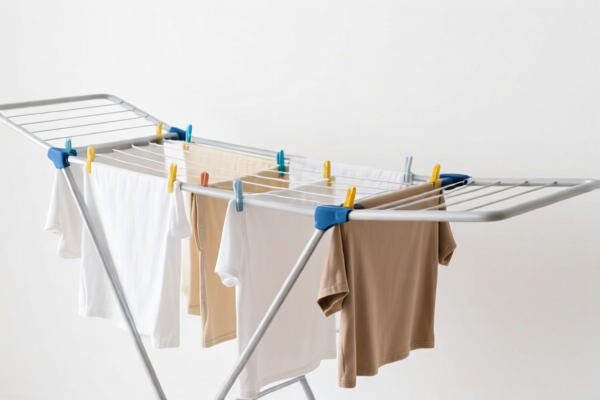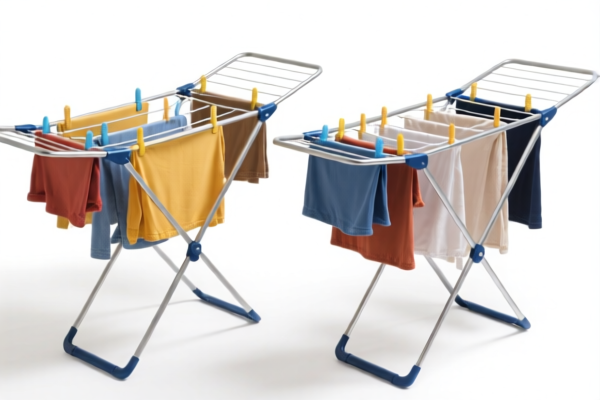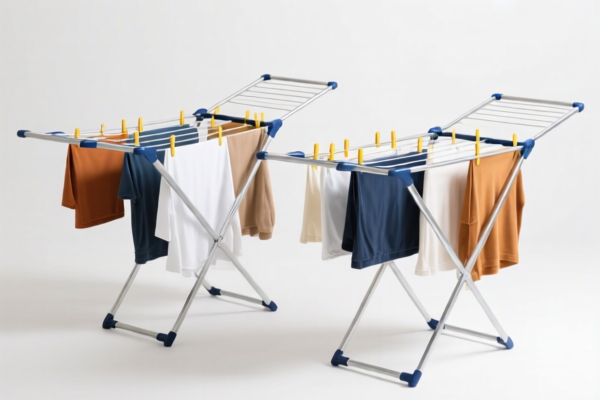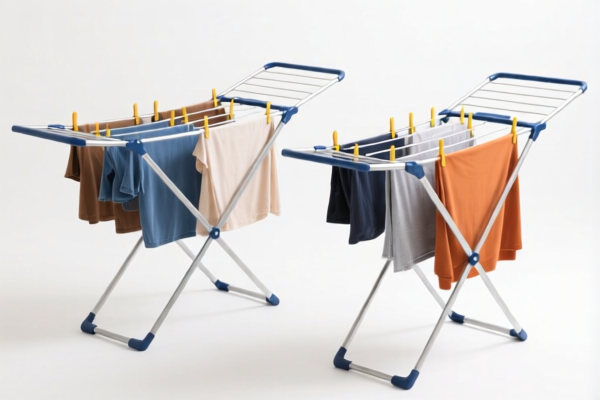| HS Code | Official Doc | Tariff Rate | Origin | Destination | Effective Date |
|---|---|---|---|---|---|
| 8304000000 | Doc | 33.9% | CN | US | 2025-05-12 |
| 9403999040 | Doc | 80.0% | CN | US | 2025-05-12 |
| 9403608089 | Doc | 55.0% | CN | US | 2025-05-12 |
| 6304996040 | Doc | 33.2% | CN | US | 2025-05-12 |
| 3926909910 | Doc | 42.8% | CN | US | 2025-05-12 |
| 3926909925 | Doc | 42.8% | CN | US | 2025-05-12 |
| 3925900000 | Doc | 60.3% | CN | US | 2025-05-12 |
| 3925100000 | Doc | 61.3% | CN | US | 2025-05-12 |
| 7326908605 | Doc | 82.9% | CN | US | 2025-05-12 |
| 7326908676 | Doc | 82.9% | CN | US | 2025-05-12 |
| 7323997000 | Doc | 60.3% | CN | US | 2025-05-12 |
| 7323999080 | Doc | 83.4% | CN | US | 2025-05-12 |
| 6701003000 | Doc | 59.7% | CN | US | 2025-05-12 |
| 6701006000 | Doc | 59.7% | CN | US | 2025-05-12 |
| 6703003000 | Doc | 37.5% | CN | US | 2025-05-12 |
| 6703006000 | Doc | 37.5% | CN | US | 2025-05-12 |




Portable Drying Rack
A portable drying rack is a folding or collapsible structure designed for air-drying laundry, offering a convenient alternative to traditional washing lines or tumble dryers.
Material
Portable drying racks are commonly constructed from the following materials:
- Steel: Offers high strength and durability, often with a rust-resistant coating. Heavier and more robust.
- Aluminum: Lightweight and corrosion-resistant, making it suitable for indoor and outdoor use. May have a lower weight capacity than steel.
- Plastic: Typically used for smaller, lightweight racks. Less durable than metal options and can be susceptible to cracking or warping.
- Wood: Less common now, but can offer a classic aesthetic. Requires treatment to prevent rot and mildew.
Purpose
The primary purpose of a portable drying rack is to provide a space-efficient method for air-drying clothes, shoes, and other textiles. They are particularly useful for:
- Limited Space: Ideal for apartments, dorm rooms, or homes without outdoor drying areas.
- Delicate Items: Suitable for drying items that cannot be tumble dried, such as lingerie, silk, or wool.
- Energy Saving: Reduces reliance on electric dryers, lowering energy consumption.
- Preventing Shrinkage/Damage: Air-drying minimizes the risk of shrinkage or damage caused by high heat.
Function
Portable drying racks function by providing a suspended surface for air to circulate around the laundry, facilitating evaporation of moisture. Key functional aspects include:
- Folding/Collapsing Mechanism: Allows for compact storage when not in use.
- Stability: Designed to remain stable when loaded with wet laundry. Some models include locking mechanisms.
- Weight Capacity: The maximum weight of laundry the rack can safely support.
- Surface Area: The total length of drying bars or lines, determining the amount of laundry that can be dried at once.
Usage Scenarios
- Indoor Drying: Placed in bedrooms, bathrooms, laundry rooms, or spare rooms.
- Outdoor Drying (weather permitting): Used on balconies, patios, or in gardens.
- Travel: Compact, folding models are suitable for use in hotels or camping.
- Emergency Drying: Useful for drying clothes quickly in situations where a dryer is unavailable.
Common Types
- Folding X-Frame Racks: The most common type, featuring an X-shaped frame that folds flat for storage.
- Vertical Racks: Tall, freestanding racks with multiple tiers for increased drying capacity. Often have wheels for mobility.
- Wall-Mounted Racks: Fixed to a wall to save floor space.
- Over-the-Door Racks: Hang over a door, ideal for small spaces.
- Rotating Racks: Allow for easy access to all items.
- Heated Drying Racks: Include heating elements to speed up the drying process.
- Sock Drying Racks: Small racks specifically designed for drying socks and other small items.
Portable drying racks can be categorized based on their material and construction. The following HS codes may be applicable:
- 3925900000: Builders' ware of plastics, not elsewhere specified or included: Other. This code applies to portable drying racks constructed entirely of plastic and not specifically classified elsewhere. The basic duty is 5.3%, with an additional duty of 25.0%, and a further 30.0% after April 2, 2025, resulting in a total tariff of 60.3%.
- 3925100000: Reservoirs, tanks, vats and similar containers, of a capacity exceeding 300 liters (If the drying rack is designed as a large container-like structure). If the portable drying rack is designed with a large container-like structure and has a capacity exceeding 300 liters, this code may be applicable. The basic duty is 6.3%, with an additional duty of 25.0%, and a further 30.0% after April 2, 2025, resulting in a total tariff of 61.3%.
- 7323997000: Table, kitchen or other household articles and parts thereof, of iron or steel; iron or steel wool; pot scourers and scouring or polishing pads, gloves and the like, of iron or steel: Other: Other: Not coated or plated with precious metal: Other: Cookingware. If the drying rack is made of iron or steel and is designed for use in the kitchen, this code may be applicable. The basic duty is 5.3%, with an additional duty of 0.0%, and a further 30.0% after April 2, 2025, and a further 25% for steel and aluminum products, resulting in a total tariff of 60.3%.
- 7323999080: Table, kitchen or other household articles and parts thereof, of iron or steel; iron or steel wool; pot scourers and scouring or polishing pads, gloves and the like, of iron or steel: Other: Other: Not coated or plated with precious metal: Other: Other Other. If the drying rack is made of iron or steel and is not specifically classified as cookingware, this code may be applicable. The basic duty is 3.4%, with an additional duty of 25.0%, and a further 30.0% after April 2, 2025, and a further 25% for steel and aluminum products, resulting in a total tariff of 83.4%.
Regarding HS codes 7323997000 and 7323999080, please note the need to verify the material (steel or aluminum) and may require certification for steel and aluminum products.
Customer Reviews
No reviews yet.